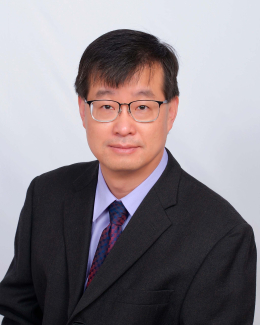Using Quantum for High-Tech Innovation
My friend and colleague Professor Jun Ye is an ever-flowing fountain of scientific and technological innovation.
One of the greatest laser scientists in the world, he and his students have built several generations of record-setting optical clocks. The technology has advanced to the point where Jun’s clocks would gain or lose less than a second in the whole age of the universe. These highly accurate clocks are tied into technology improvements to support better navigation, communication and the ability to sense unseen things (for example, small changes in gravity associated with objects buried underground). Additionally, his lab created the world’s first nuclear clock.
Through his research at JILA, Jun uses lasers to detect slight traces of unusual elements in gas samples. His group is now examining the air exhaled by people with various diseases to find tiny traces of certain chemicals associated with a particular disease. If this works, one day cancer testing might be as easy as puffing some air into a soda straw.
Much of his research is built around using the properties of quantum mechanics to do high-tech research — precision measurement, secure communication, exotic material design — that eludes the reach of “old-school” classical mechanics.
Perhaps as impactful as anything else he does, Jun has trained an entirely new generation of elite scientists and engineers, who are now the beating heart of Colorado’s, and the nation’s, high-tech industry. When I visit high-tech Colorado companies, it often seems that the technical leadership are CU Boulder alums who earned their degrees while working in Jun’s group.
On top of his research, Jun is working with me on a joint project to understand why there is more matter than antimatter in the universe. It sounds like a very abstract topic, but it is part of a bigger question: How are the conditions in the universe such that the development of humankind is possible? I feel very privileged to collaborate with Jun. I’ve learned a lot from working with him. Sometimes I wonder if the man ever sleeps!
Eric Cornell has been at CU for 34 years and wears many hats. He teaches first-year physics for the CU Boulder Department of Physics; he is a JILA fellow; and a scientist with the National Institute of Standards and Technology (NIST), part of the U.S. Department of Commerce. In 2001, he and CU Boulder professor Carl Wieman won the Nobel Prize in Physics for creating Bose-Einstein Condensation, the “world’s coldest stuff.”
Article Reposted From: https://www.colorado.edu/coloradan/2025/07/07/five-cu-innovators-changing-world#Jun%20Ye




